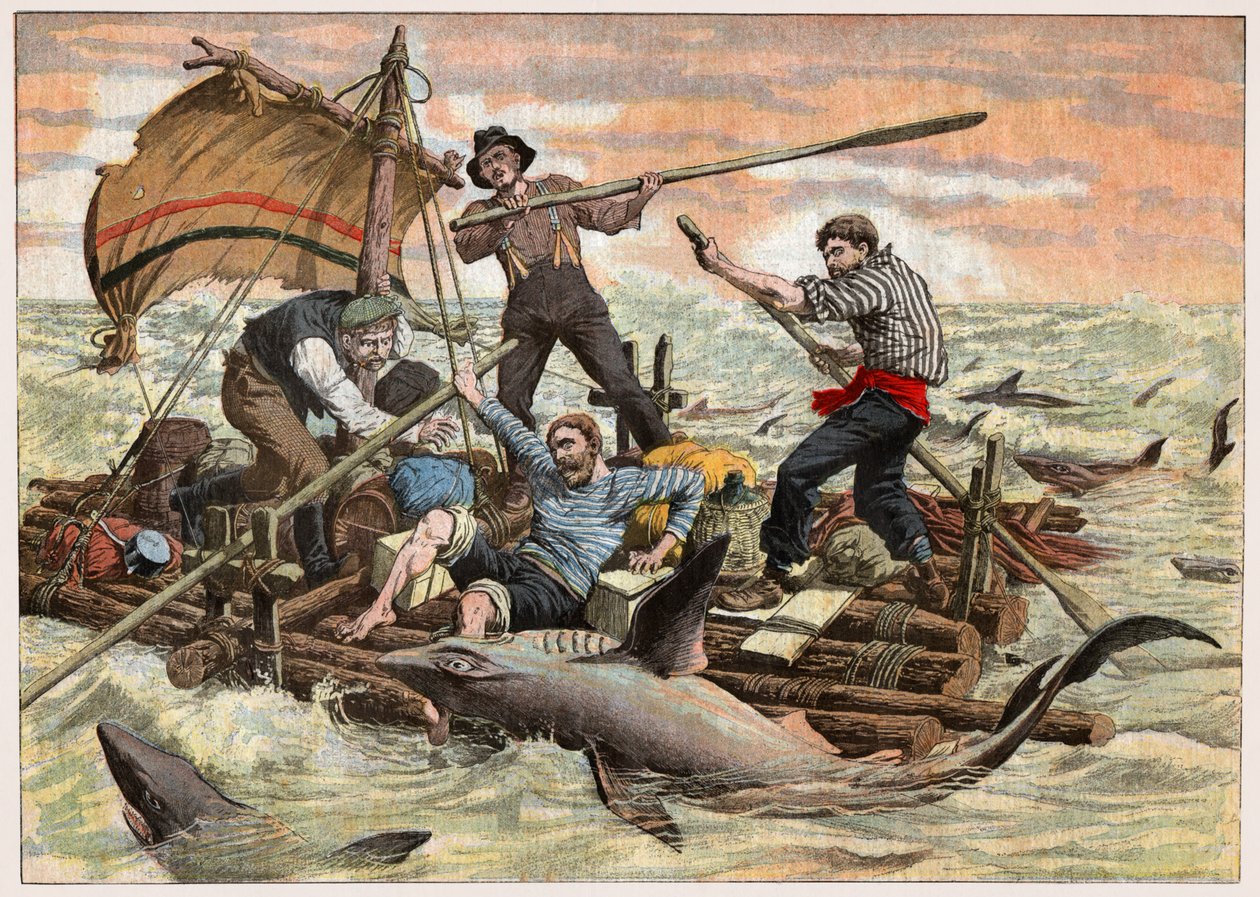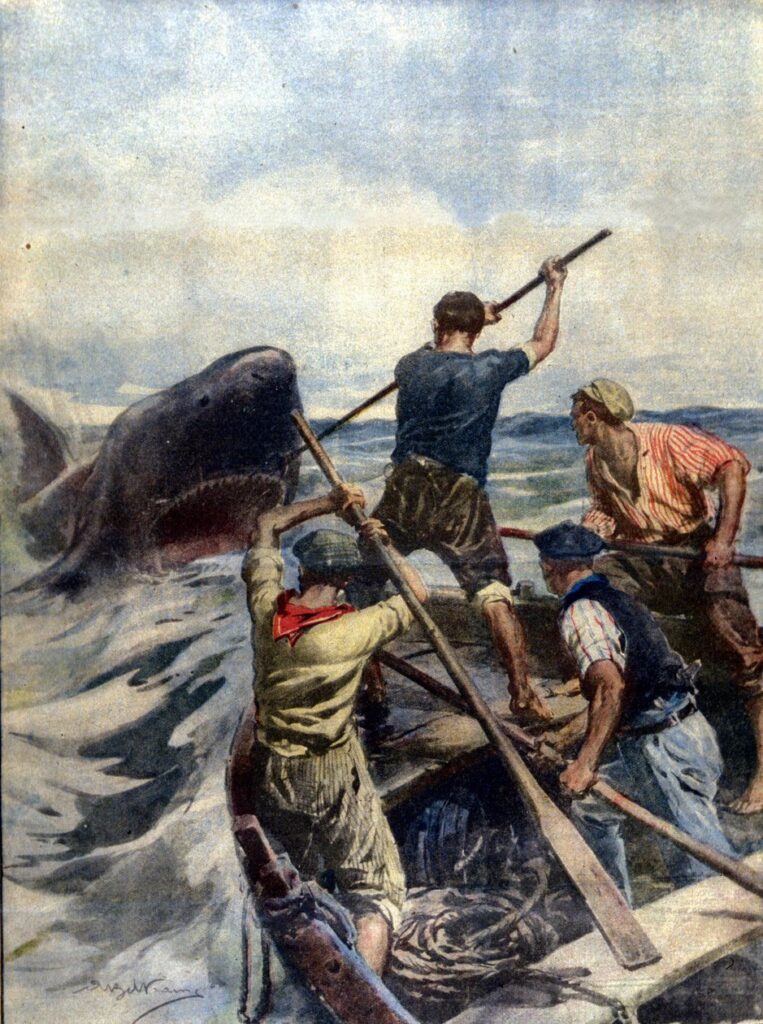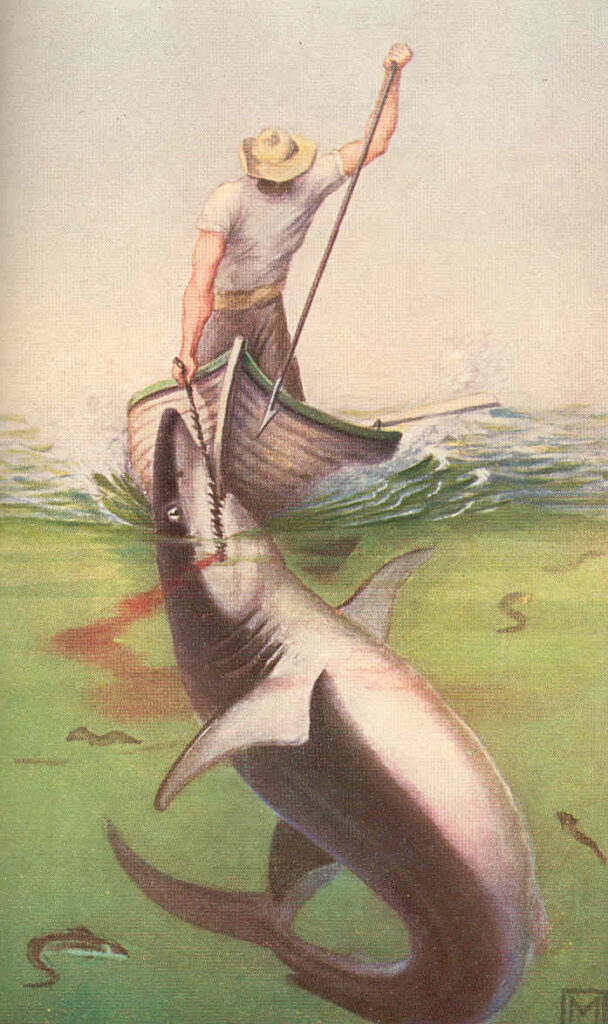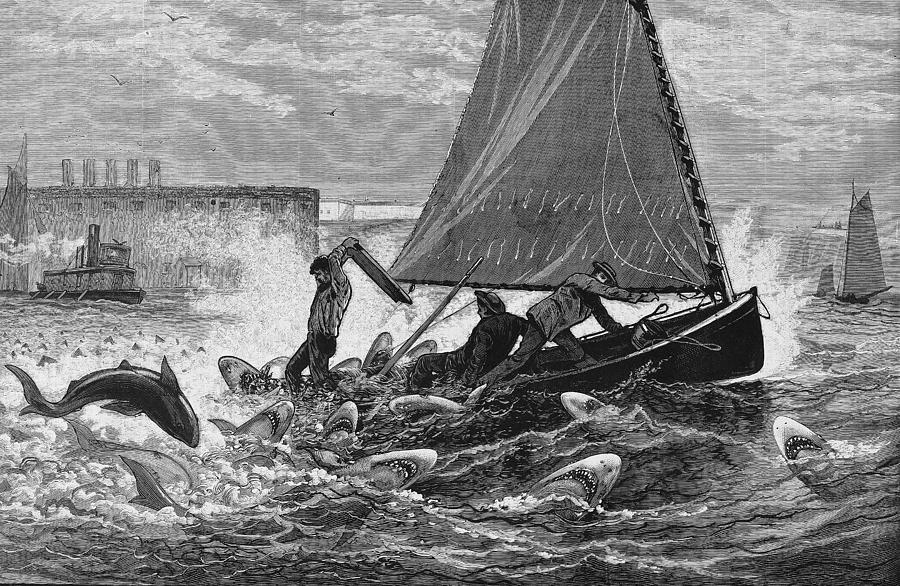“The USS Indianapolis: Truth Behind the World’s Deadliest Shark Attack”

When people think of shark attacks, most imagine terrifying scenes from films like Jaws or viral videos of great whites breaching the ocean’s surface. But the deadliest shark attack in recorded history didn’t happen to a lone swimmer or surfer—it happened during World War II, amid the wreckage of the USS Indianapolis in 1945. Over time, popular retellings have distorted many facts about the tragedy, turning it into a tale of shark terror while overshadowing the more complex—and far more human—story behind it.
This article explores what really happened, what popular accounts get wrong, and why the truth about the USS Indianapolis is as much about war, neglect, and survival as it is about sharks.
The Sinking of the USS Indianapolis
On July 30, 1945, the USS Indianapolis, a Portland-class heavy cruiser of the United States Navy, was returning from a top-secret mission delivering parts for the atomic bomb “Little Boy” to the island of Tinian. Just days after completing its mission, the ship was torpedoed by a Japanese submarine, I-58, in the Philippine Sea.
The attack occurred shortly after midnight. The ship sank in just 12 minutes, with nearly 300 men going down with it. The remaining ~900 crew members were left floating in the open ocean without lifeboats, food, or sufficient freshwater—exposed to dehydration, sunburn, hypothermia, hallucinations, and yes, shark-infested waters.
But here’s where the myths begin.
The Shark Attack Narrative
Popular stories—especially those circulated by films, documentaries, and even Jaws (1975), in which the USS Indianapolis story is told in a haunting monologue—suggest that hundreds of men were eaten alive by sharks, making it the most lethal shark attack in history. While shark attacks did occur, the actual cause of death for most was not shark predation.
Researchers and military historians now agree that the primary causes of death were:
- Dehydration and exposure: The blistering sun, saltwater sores, and lack of drinking water claimed countless lives.
- Delirium and drowning: Hallucinating from thirst, some men simply swam away or slipped beneath the waves.
- Injuries from the initial attack: Many were wounded during the sinking, and some succumbed to those injuries in the water.
- Shark attacks: These occurred, but they were more likely scavenging from the dead or dying rather than active hunting of the healthy.
Sharks—primarily oceanic whitetips and possibly tiger sharks—did pose a threat, and survivors describe horrifying scenes. But modern analysis estimates that perhaps 50 of the 600 lost in the water died from shark attacks, not hundreds as often claimed.


Why Help Was So Late
One of the darkest aspects of the USS Indianapolis tragedy was the Navy’s failure to notice the ship was missing. Because the mission was secret, and because proper tracking protocols weren’t followed, the Navy didn’t realize the Indianapolis had sunk for four full days.
Survivors endured unimaginable suffering before a routine patrol flight accidentally spotted them. A rescue mission was launched, and 316 of the 1,196 crew survived—meaning roughly 880 perished, making it one of the worst naval disasters in U.S. history.
The Fallout and the Scapegoating of Captain McVay
In the wake of the disaster, the Navy sought to protect its image by placing the blame squarely on the ship’s captain, Charles B. McVay III. He was court-martialed and convicted of “hazarding his ship by failing to zigzag”, even though:
- Survivors testified that zigzagging would not have saved them.
- The Japanese submarine commander, Mochitsura Hashimoto, testified that zigzagging wouldn’t have made a difference.
- The Navy failed to warn McVay that enemy submarines were known to be operating in the area.
Despite these facts, McVay was vilified and received hate mail for years from the families of lost sailors. In 1968, he died by suicide. It wasn’t until decades later that his name was cleared. In 2000, Congress passed a resolution exonerating him, and in 2001, the Secretary of the Navy officially cleared his record.
Separating Myth from Reality
What most people get wrong about the USS Indianapolis tragedy:
- 🔺 Myth: The majority of sailors were eaten by sharks.
✅ Reality: Most died from exposure, dehydration, and neglect. - 🔺 Myth: Sharks were the primary villains.
✅ Reality: Bureaucratic errors, secrecy, and command failures were more lethal. - 🔺 Myth: Captain McVay was incompetent.
✅ Reality: He was scapegoated to protect the Navy’s reputation.
The shark attacks were real—and terrifying—but they have overshadowed a broader truth: this was a systemic failure of military oversight, and the tragedy should be remembered not only for its horror but for the injustice that followed.
The Legacy of the Indianapolis
Today, the story of the USS Indianapolis stands as a lesson in:
- The brutal cost of war
- The danger of misinformation
- The importance of accountability
- The resilience of the human spirit under unimaginable conditions
Memorials, books, and survivor reunions have helped keep the memory alive. In 2017, a team of civilian explorers located the wreck of the Indianapolis on the seafloor, over 18,000 feet below the surface, bringing long-awaited closure to a chapter of forgotten valor.
Conclusion
The deadliest shark attack in history wasn’t just about sharks. It was about the men left behind, the failures of those who could have saved them, and the long, slow effort to uncover and acknowledge the truth. While the ocean claimed hundreds of lives, the real tragedy lies in how they were lost—and how long it took to set the record straight.





